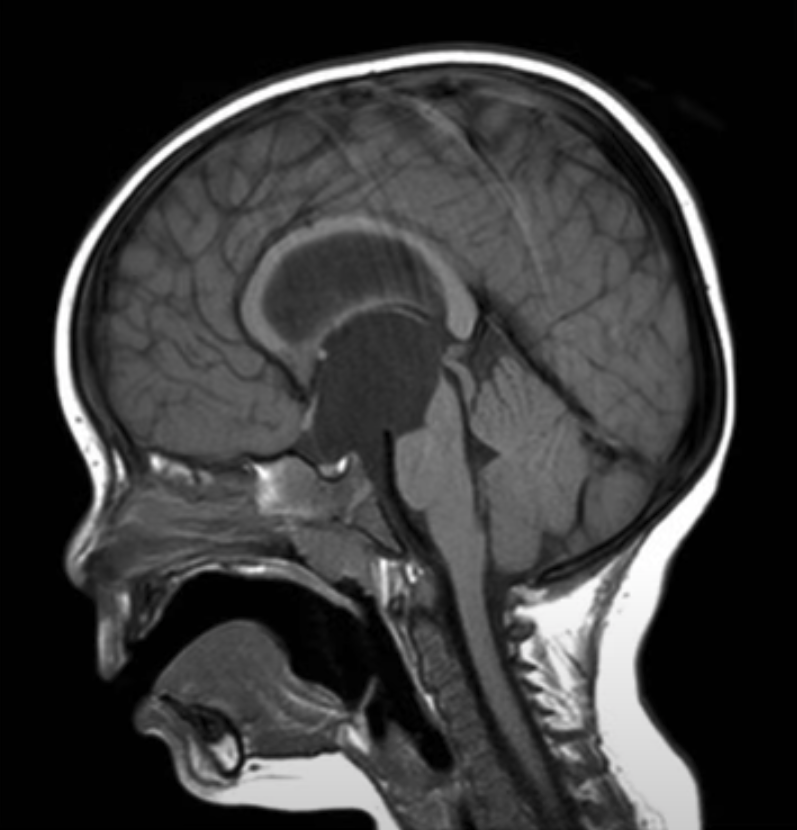 Incidental findings are common in brain MRIs of children and may be frequent enough to justify routine screening of brain imaging obtained in research setting, a US study suggests
Incidental findings are common in brain MRIs of children and may be frequent enough to justify routine screening of brain imaging obtained in research setting, a US study suggests
A review of brain MRI scans from 11,679 healthy children taking part in a study of brain development found that more one in five (21%) had incidental findings.
When reviewed by a neuroradiologist, about 4% of the scans obtained from children between nine and ten years of age in the Adolescent Brain Cognitive Development (ABCD) study showed incidental findings for which non-urgent or urgent clinical referral was recommended.
Of the 2464 children with incidental findings on brain MRI, 2013 children (17.2%) assigned to category 2, which was defined as normal anatomic variant or common incidental finding unlikely to be of clinical significance; no referral necessary.
A further, 431 (3.7%) were assigned to category 3 (routine clinical referral recommended) and 20 (0.2%) were assigned to category 4 (immediate clinical referral recommended).
Overall, the most common incidental findings regardless of category were pineal cyst (7.8%), posterior fossa arachnoid cyst vs mega cisternal magna (1.9%), developmental venous anomaly (1.9%), nonspecific white matter lesions concerning for sequela of infection, inflammation, ischaemia, dysmyelination, or demyelination (1.6%), mastoid effusions (1.2%), cavum septum pellucidum (1.2%) and arachnoid cyst (1.1%)
The most common incidental findings that triggered a referral recommendation were
- Periventricular nodular heterotopia (0.94%)
- White matter abnormalities concerning for infection, inflammation, or ischaemic injury (0.50%)
- Arachnoid/intraventricular cyst with mass effect 28 (0.24%)
- Possible glial neoplasm (0.23%)
- Head and neck findings (0.22%)
- Large pineal cyst with mass effect (0.22%)
- Cerebellar tonsillar ectopia (without Chiari I malformation) (0.21%)
- Parotid lymphoepithelial cysts (0.19%)
- Chiari I malformation (0.17%)
The study investigators, led by Associate Professor Leo Sugrue of the UCSF Department of Radiology, said the results provided the best estimates to date of the true incidence of various structural abnormalities in the developing brain.
“From examining brain MRIs in this large, demographically diverse sample of U.S. kids, now we know with good statistical reliability how common various brain abnormalities are in the general population,” he said.
“From a clinical perspective, knowing the prevalence of specific IFs can help contextualise the importance of similar findings on clinical imaging. From a research perspective, knowing the overall rate of incidental findings can help in counselling research participants during the informed consent process,” the study authors said.
But the high incidence of incidental findings also raised the question of whether all MRI brain imaging obtained during research studies should be reviewed by board-certified radiologists, they added, in the hopes of saving lives and alerting participants to incidental findings that ought to be medically evaluated.
“Knowing the value of routine neuroradiologic screening of research brain MRI scan inform ongoing discussions about the appropriateness of making such screening standard practice, particularly in large-scale studies like ABCD,” they wrote..
“Our experience with the ABCD study suggests that it is feasible to perform neuroradiologic screening using a centralised and standardised system, even at large scale, with report turnaround times of less than two weeks.
Associate Professor Sugrue said the incidental findings would also been included in further analysis of the same cohort of children as they matured from pre-adolescence through adulthood, to determine how brain development influences health, including behavioural, social, and educational outcomes.
“Brain changes during this period are suspected to influence risk for disorders such as schizophrenia, depression, attention-deficit/hyperactivity disorder, and addiction. However, to date our understanding of those relationships has been limited by a lack of high-quality longitudinal data, a gap that the ABCD study aims to fill,” he said.
The findings are published in JAMA Neurology.